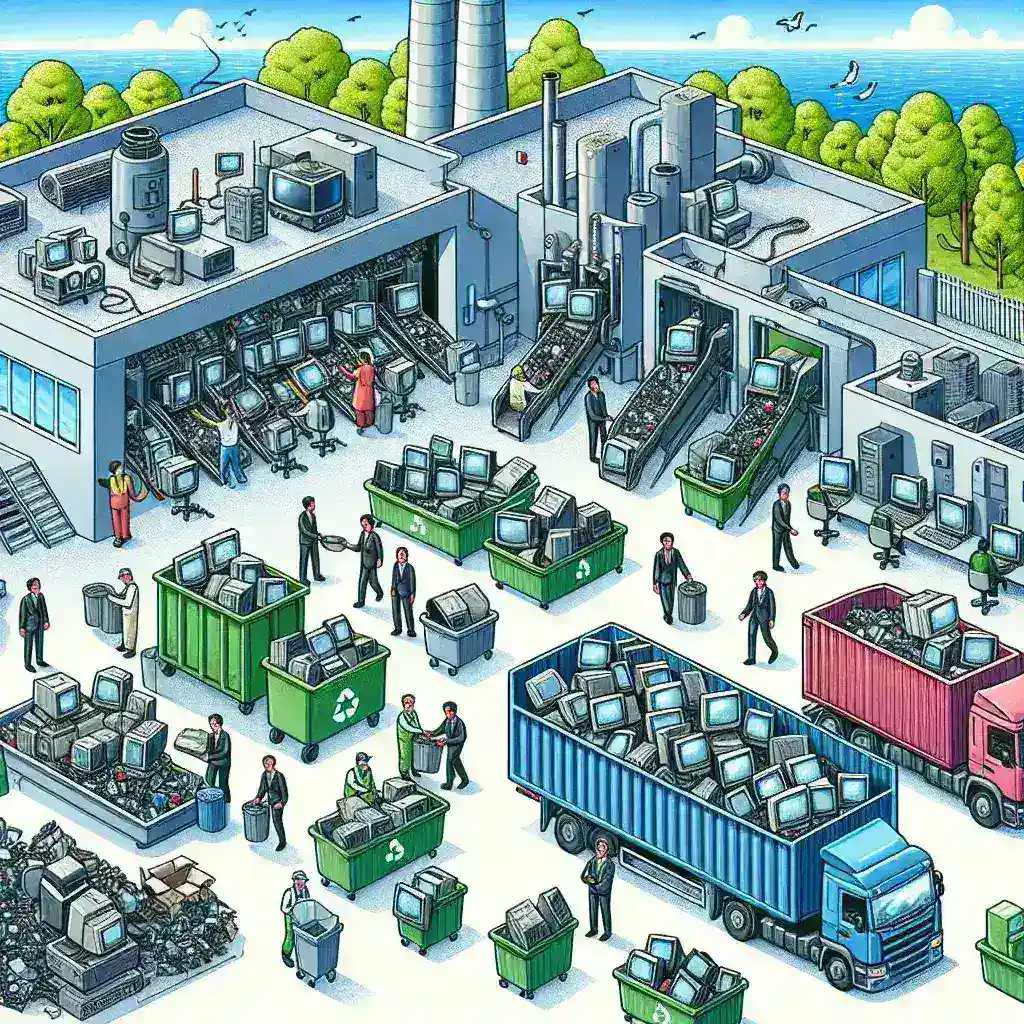What organizations handle CRT recycling?
With the rapid evolution of technology, many of us find ourselves with obsolete electronics that need proper disposal, particularly Cathode Ray Tube (CRT) devices like old televisions and monitors. These devices contain hazardous materials that require special handling to avoid environmental contamination. But who handles CRT recycling? In this article, we will explore various organizations that take charge of CRT recycling, including their methodologies, and the impact they have on the environment.
Importance of CRT Recycling
CRT devices contain materials such as lead, which can be dangerous if not disposed of correctly. Proper recycling not only prevents harmful substances from polluting the environment but also allows for the recovery of valuable materials.
Organizations Involved in CRT Recycling
Several organizations across the globe are dedicated to the proper recycling of CRT devices. Here are some notable ones:
| Organization | Location | Services Offered |
|---|---|---|
| e-Stewards | United States | Certification for ethical electronic recycling |
| SERI (Sustainable Electronics Recycling International) | Global | R2 Standard for responsible recycling |
| WEEE Forum | Europe | Representation of e-waste recycling companies |
| UNEP (United Nations Environment Programme) | Global | Policy development and advocacy |
| Goodwill Industries | United States | Collection and recycling of electronics |
e-Stewards
e-Stewards is an initiative started by the Basel Action Network (BAN) aimed at promoting responsible recycling standards. They provide a certification program for recyclers, ensuring that they adhere to environmentally sound practices. Recyclers certified by e-Stewards are committed to avoiding landfills, incinerators, and prison labor while promoting worker safety and data security.
SERI (Sustainable Electronics Recycling International)
SERI is a non-profit organization that administers the R2 (Responsible Recycling) Standard. This global standard helps organizations recycle electronics responsibly, ensuring that they handle hazardous materials properly and promote the recovery and reuse of valuable resources. Companies certified under the R2 Standard are rigorously audited to ensure compliance.
WEEE Forum
The Waste Electrical and Electronic Equipment (WEEE) Forum is a European association of e-waste collection and recycling companies. The organization represents its members in policy discussions and aims to improve the standards and efficiency of e-waste recycling across Europe. They provide a platform for members to share best practices and collaborate on innovative recycling methods.
UNEP (United Nations Environment Programme)
The UNEP plays a crucial role in global environmental policy, including the management of electronic waste. They work with governments, businesses, and other stakeholders to develop regulations and practices that promote the safe recycling of e-waste, including CRT devices. UNEP’s guidelines help countries implement effective recycling strategies, reducing the environmental and health risks associated with improper e-waste disposal.
Goodwill Industries
Goodwill Industries is well-known for its thrift stores, but the organization also plays a significant role in electronics recycling in the United States. Goodwill collects old electronics, including CRT devices, and ensures they are recycled responsibly. Some locations partner with certified e-waste recyclers, ensuring that collected electronics are handled ethically and sustainably.
Processes and Methods in CRT Recycling
The organizations mentioned above employ various processes to ensure the efficient and safe recycling of CRT devices. Here are some common methods:
Manual Disassembly
Manual disassembly involves breaking down CRT devices into their constituent parts by hand. This method allows for the careful separation of hazardous materials like lead from recyclable components such as glass and metals.
Automated Recycling
Automated recycling uses machinery to dismantle CRT devices. These systems can efficiently handle large volumes of e-waste and often include sorting mechanisms to separate different materials for recycling.
Material Recovery
Material recovery processes focus on extracting valuable materials from CRT devices. For example, copper, aluminum, and rare earth metals can be recovered and reused in manufacturing new products.
Glass-to-Glass Recycling
Glass-to-glass recycling involves processing the glass from CRT screens into new CRT or other types of glass products. This method helps reduce the demand for raw materials and minimizes waste.
Impact of CRT Recycling
Proper CRT recycling offers multiple benefits:
- Environmental Protection: By safely disposing of hazardous materials, CRT recycling prevents soil and water contamination.
- Resource Conservation: Recycling allows for the recovery of valuable materials, reducing the need for new raw materials.
- Economic Benefits: The recycling industry creates jobs and contributes to the economy through the sale of recycled materials.
- Health and Safety: Safe recycling practices protect workers and the public from exposure to hazardous substances.
The organizations that handle CRT recycling play a pivotal role in mitigating the environmental impact of electronic waste. By adhering to high standards and employing advanced recycling methods, they ensure that obsolete electronics are disposed of responsibly, contributing to a more sustainable future.

